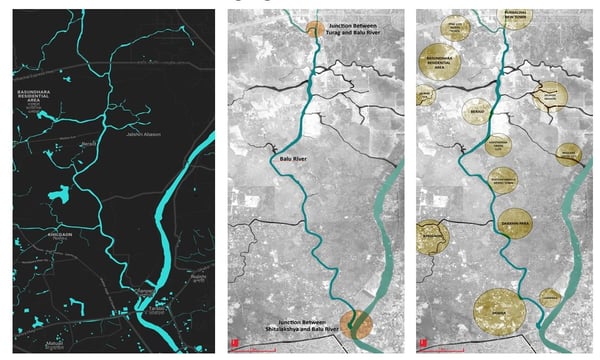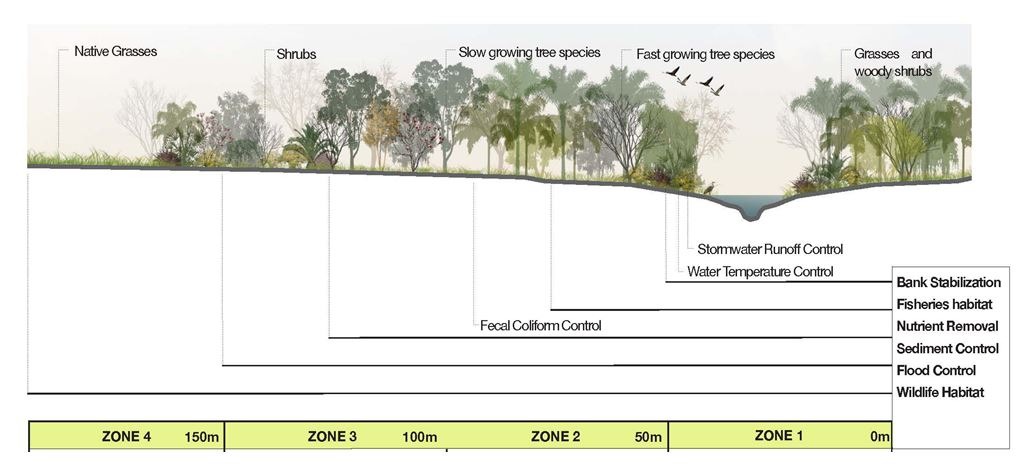September 2018
Project: Sustainable Urban Drainage System


This research project shows how the hydrological cycle of Khulna and Dhaka changed from past to present, and how the river basins that were functioning as river basins disappeared. Besides, destruction of KDA 1964 plan in case of Khulna, creation of Rupsa, new water plant issue, elimination of underground drainage, reduction of groundwater flow due to Sundarbans, and new urban drainage policy for Khulna and Dhaka as per IUWM and SUDS policy- and our recommendations and changes- (Water Table and drainage design, sub-surface drainage recovery and its effects, maintaining the hydrological cycle, surface water flow planning, groundwater recharge planning, minimum risk drinking water harvesting, water basin and wetland planning.
Related Publications
Published:
Healing Balu River, Dhaka: Restoration through revitalizing the riparian buffer zone (Not Contributed)
Conference: 13TH FARU INTERNATIONAL RESEARCH CONFERENCE - FARU 2020
Location: University of Mortuwa, Sri Lanka
Author: Shauni Priyam Shikder *, Muhammad Golam Sami
Abstract: The growth of Dhaka, the capital of Bangladesh, is characterized by rapid urbanization and frequent expansion, due to which its urban tissues are transforming in an environmentally detrimental manner. As a result, a 110 km long waterway network of four significant rivers of Dhaka, which was once an integrated part of the city fabric, continues to disappear. Flowing for 44km along its east side, Balu River is an important lifeline for Dhaka. Due to massive water pollution and rapid encroachment, Balu is now in its deathbed having no trace of flood basin areas as they have already been developed for housing projects by realtors, thereby causing brutal ecological change to a precious landscape. Though it may be the thinnest urban spine, but with proper landscape interventions, it has scope to become the longest stretch of public space in Dhaka. This paper explores what impact water edge urban greening can have on a city like Dhaka and how a polluted dying river can be revitalized. Among various methods, riparian ecosystem restoration is one that seeks to correct water quality, degraded ecosystem and recreate lost habitats. This research was principally based on observation and field survey. Books, journals, documents from websites etc. are the sources of secondary data. The study will explore the questions of restoring the unique natural dynamics of delta environment along with the diversified ecology of Balu River, as well as their integration with present and future urban development. In summation, this study aims to come up with a model which will combine a new city pattern with the rejuvenation of a river system, thus opening the doors to a totally new urban experience.
Work In Progress:
·Surface Water and Flood Management for Khulna: A Simulation Approach for Revitalization of Natural Drainage System of Khulna
(Data Collected in 2018, to be submitted for publication in spring 2024)


~ RIVERS ARE LIKE VEINS AND ARTERIES; IT SUPPORT BOTH LIFE AND DEATH. IT REMOVES WASTE WATER AWAY OR BRINGS POTABLE WATER FOR URBAN PEOPLE.


Want a research collaboration?
Related ARTICLES
RESEARCH COLLABORATORS


Muhammad Golam Sami
B. Arch, Khulna University of Engineering & Technology, Khulna, Bangladesh Architect | Futurist | Sustainable Design Expert
Operational Head, ADORA Studios, Bangladesh
Founder, samism.org
Lecturer, Department of Architecture
Northern University of Business & Technology


Mahmuda Yasmin Dola
B. Arch, Khulna University of Engineering & Technology, Khulna, Bangladesh Architect | Analytical Practitioner
Head of Construction, ADORA Studios, Bangladesh
CMO & Head of Construction, SS Construction & Power Solution, Bangladesh
Project: Sustainable Urban Drainage System
This research project shows how the hydrological cycle of Khulna and Dhaka changed from past to present, and how the river basins that were functioning as river basins disappeared. Besides, destruction of KDA 1964 plan in case of Khulna, creation of Rupsa, new water plant issue, elimination of underground drainage, reduction of groundwater flow due to Sundarbans, and new urban drainage policy for Khulna and Dhaka as per IUWM and SUDS policy- and our recommendations and changes- (Water Table and drainage design, sub-surface drainage recovery and its effects, maintaining the hydrological cycle, surface water flow planning, groundwater recharge planning, minimum risk drinking water harvesting, water basin and wetland planning.
Muhammad Golam Sami, Shauni Pryam Sikder, Mahmuda Yasmin Dola
9/20/20183 min read




